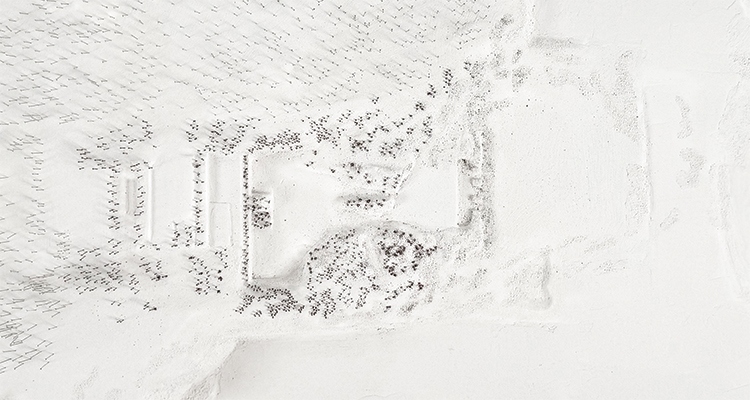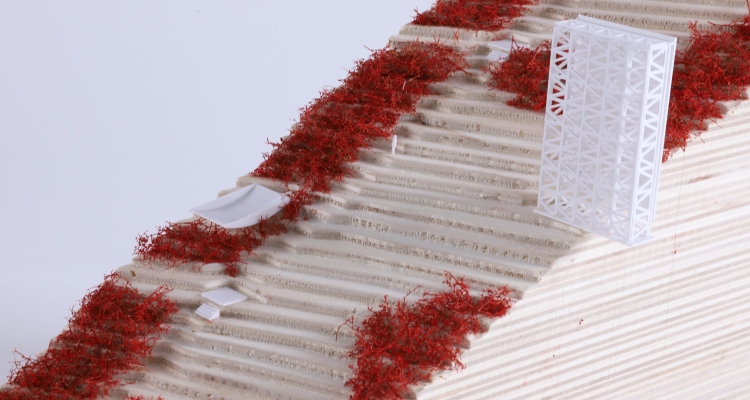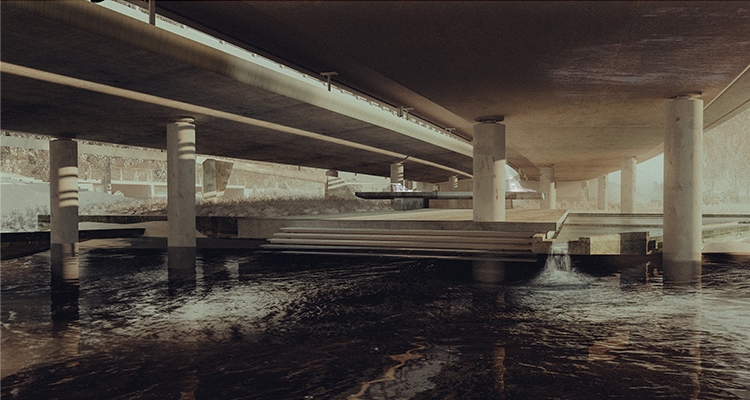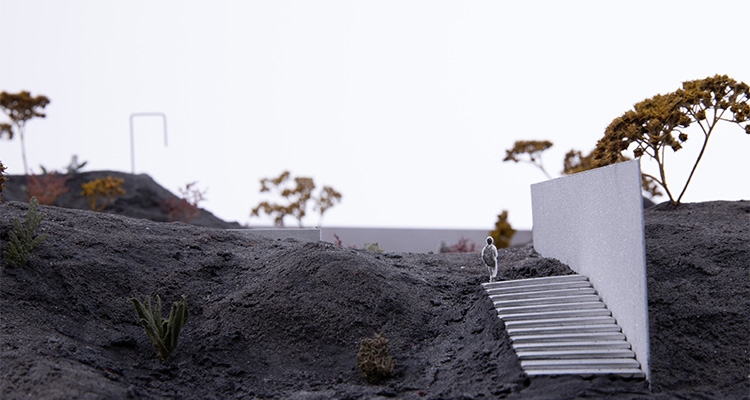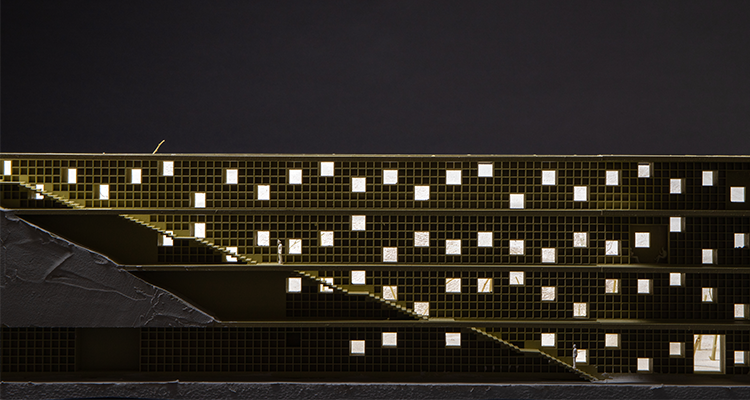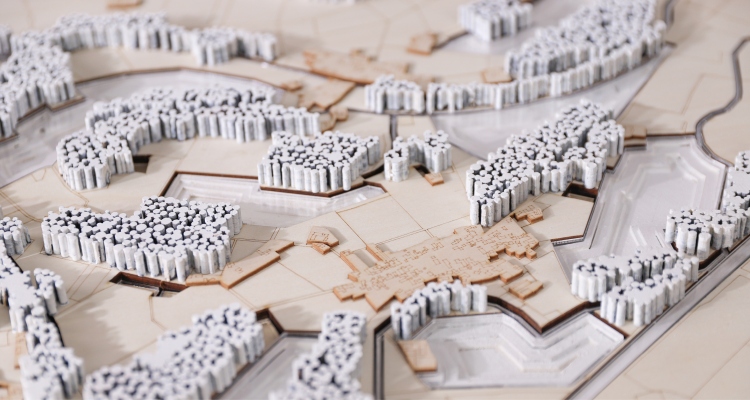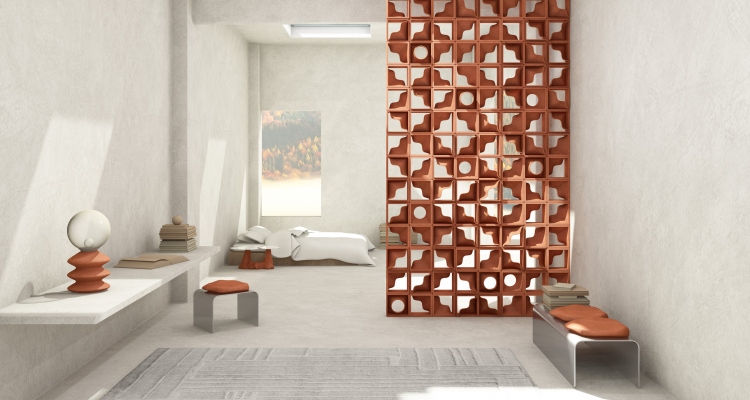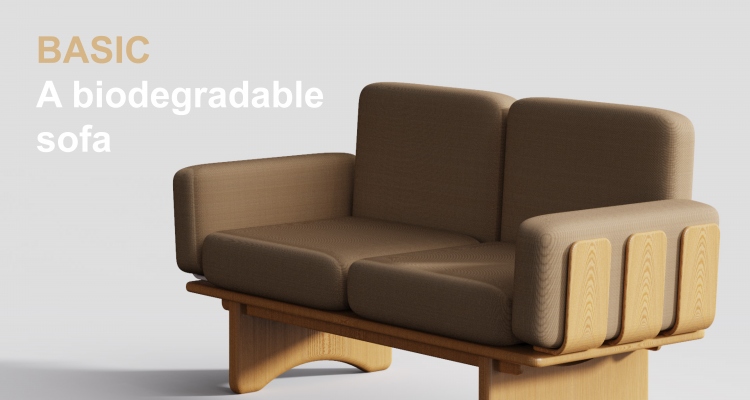This project transforms a current waste delivery station into a dynamic public resource garden, breathing new life into a historic site of former resource depletion, the old iron ore factory of Salangsverket in northern Norway. The waste that is today shipped to be handled elsewhere in Norway and the world, is instead managed on site for recycling purposes, artistic activities, and soil cultivation. The new recycling station is framed by a series of curated gardens that present different stages of soil maturity and plant succession.
Diploma project

The site I have chosen for my diploma is located at Sannergata 3 a intersection between Sannergata and Markveien. The site benefits from its central location, well connected to the bustling city life at Grünerløkka and Torshov.
The duality of the plot benefits too from its immediate neighbour of Akerselva, a green waterway that runs through the whole of Oslo.
Colombia -the second most biodiverse country in the world- has 50% of the world’s páramos. These strategic ecosystems regulate and provide about 70% of Colombia’s water resources, store large amounts of atmospheric carbon in their soils, and have high levels of endemism.
The proposed intervention for the underpass at Vøien bridge aims to transform this fragmented relationship between infrastructure and landscape into a cohesive and poetic design. It seeks to create a new sense of everyday spaces by integrating the underpass with the riverine landscape, while also treating the runoff water to minimize its negative effects on water quality and fish life. The project draws on the understanding that the river is not merely a passive element but a dynamic force that adapts to the terrain.
A volcano called Xitle erupted 2,500 years ago. This volcano is part of a mountain range of more than 200 small volcanoes that make up the Mexican volcanic belt. The spill covered a relatively low kidney-shaped area, a total of almost 8,000 Ha. Today is known as El Pedregal.

Sand is the most heavily extracted material on the planet, with 50 billion tons extracted annually for construction purposes. Mining sites are often located in floodplains along rivers due to their rich geological layers. The mining operation involves digging below the groundwater table, resulting in groundwater lakes as a post-mining landscape, causing groundwater depletion.
“Rethinking Clay” aims to offer a contribution that promotes the creation and consumption of locally-sourced products. It intends to transform the perception of blue clay from waste to a valuable resource. The objective of this intervention is to explore innovative ways to utilise blue clay, thereby minimising waste and maximising its potential across various contexts.
REPLACING FOAM TO CREATE A MORE SUSTAINABLE FURNITURE
Chairs and beds are products that we depend on in our everyday lives. They are products we cannot live without. But these products are not sustainably made, because of the foam they contain. The foam they use today has a cruel manufacturing process, and it cannot be recycled but only downcycled. The foam’s material is called polyurethan and is derived from petroleum.
Chairs and beds are products that we depend on in our everyday lives. They are products we cannot live without. But these products are not sustainably made, because of the foam they contain. The foam they use today has a cruel manufacturing process, and it cannot be recycled but only downcycled. The foam’s material is called polyurethan and is derived from petroleum.
